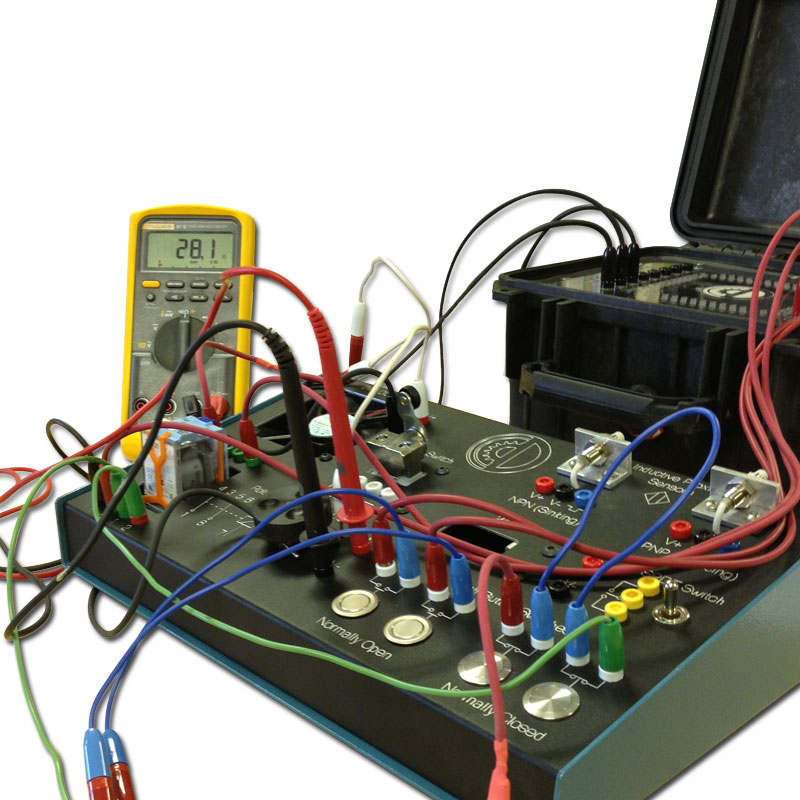Top Tips for Effective Electrical System Troubleshooting
Fixing electric systems calls for a systematic approach, grounded in an extensive understanding of electrical principles and safety and security procedures. The subtleties of effective repairing expand past plain technological expertise; understanding how to document findings and focus on safety and security can dramatically affect end results.
Understand the Essentials
Understanding the essentials of electric systems is important for effective troubleshooting, as a solid foundation allows specialists to diagnose and deal with issues more successfully. A comprehensive understanding of electric principles, such as voltage, current, resistance, and power, is crucial in identifying the origin of troubles. Voltage is the electrical potential distinction that drives existing with a circuit, while resistance opposes the flow of existing, influencing the general functionality of the system.
Familiarity with circuit elements, consisting of resistors, capacitors, diodes, and switches, is also vital. Each part plays a distinct function in circuit actions and can affect performance when malfunctioning. Furthermore, understanding series and identical circuit arrangements is important, as these plans affect the circulation of voltage and present within the system.
Moreover, understanding of safety and security procedures is indispensable. Service technicians have to know prospective threats, such as shock and brief circuits, to implement risk-free troubleshooting methods. By grasping these fundamental concepts, service technicians enhance their ability to carry out reliable diagnostics and repair work, inevitably leading to improved efficiency and integrity of electrical systems. This fundamental knowledge is the keystone of effective fixing undertakings.
Gather Necessary Equipment
Reliable troubleshooting of electric systems needs the best set of devices to detect and settle concerns precisely. Necessary devices include a multimeter, which gauges voltage, present, and resistance, allowing for specific examinations of electrical components.
Furthermore, insulated hand devices such as screwdrivers, pliers, and cable strippers are essential for securely adjusting electrical links. It is likewise recommended to have a circuit tester accessible to confirm the presence of voltage in electrical outlets and cords. For more complex systems, a thermal imaging cam can assist detect overheating elements, showing potential failings.

Adhere To an Organized Technique
Having actually gathered the suitable devices, the following action in repairing electric systems is to adhere to an organized strategy. A systematic he said approach makes certain that professionals can recognize mistakes successfully and properly, lessening downtime and protecting against unneeded repair work.
Begin by evaluating the system's schematic layouts and specs. This involves checking each part systematically, beginning from the power source and functioning in the direction of the load.
Make use of screening devices, such as multimeters and oscilloscopes, to collect objective information regarding voltage, current, and resistance at various factors within the system. This empirical evidence will lead your troubleshooting efforts and aid to verify or get rid of potential root causes of failing.
Additionally, think about environmental elements that might affect the system's efficiency, such as temperature variations or wetness access. A comprehensive examination of wiring, links, and parts will guarantee find out here now that all opportunities are represented.
Record Your Findings
Complete documents is important in the fixing procedure of electric systems. This technique not just help in understanding the root cause of the trouble yet additionally offers as a referral for future troubleshooting initiatives.

In addition, keeping a log of components replaced or fixings performed is vital. This info supports supply administration and can aid examine the longevity and integrity of certain elements.
Ultimately, the paperwork process should be detailed yet succinct, enabling very easy retrieval and testimonial - electrical system troubleshooting. By focusing on detailed documents, service technicians can create a beneficial understanding base that not only aids in current troubleshooting however also equips future upkeep efforts, therefore boosting overall system dependability

Prioritize Precaution
Acknowledging the inherent dangers linked with electric systems is essential for making certain safety during troubleshooting. Electric shock, burns, and tools damages are simply a few of the potential hazards that service technicians encounter. Prioritizing safety procedures is not just a lawful obligation however additionally an ethical vital that safeguards both the professional and the surrounding setting.
Prior to commencing any troubleshooting task, professionals should don suitable individual safety equipment (PPE), including protected gloves, shatterproof glass, and flame-resistant clothing. Guaranteeing that the job location is dry and without mess can dramatically reduce the risk of accidents. It is essential to de-energize circuits before starting any kind of job, validating that they are not live via the usage of a multimeter or voltage tester.
Developing clear interaction procedures with group members is likewise important; this guarantees that everybody is conscious of possible threats and our website the standing of the electric system being worked with. Having an emergency situation feedback strategy in area can verify very useful in the occasion of an occurrence. By focusing on precaution, technicians can effectively alleviate dangers and foster a more secure work environment.
Final Thought
Effective electrical system repairing counts on a comprehensive understanding of essential concepts and a methodical method. Focusing on safety and security steps makes sure the health of individuals included and the stability of the electric system.